underestimated instrumentalist
December 7th, 2007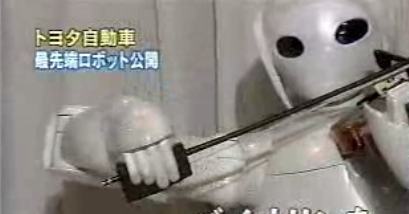
Toyota revealed a roboter violonist yesterday. I wonder wether he is able to do position shifts, though …
via pink tentacle
randformblog on math, physics, art, and design |

Toyota revealed a roboter violonist yesterday. I wonder wether he is able to do position shifts, though …
via pink tentacle

poster contest for one of the all time classics. via the cartoonist
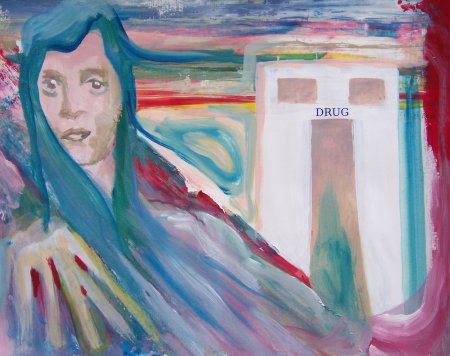
Tomorrow is World Aids day (WAD). On monday the thirteenth session of the Conference of the Parties (COP) to the United Nations Framework Convention on Climate Change (UNFCCC) is taking place at Bali, Indonesia from December 3–14, 2007, reason enough to talk about health issues.
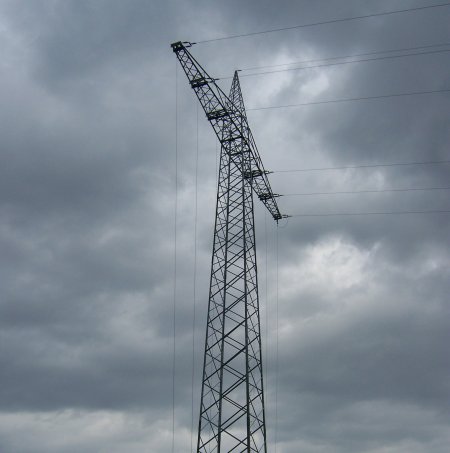
According to world-nuclear-news.org today -on French President Nicholas Sarkozy`s state visit to China- a deal was signed which ensures that
France’s national nuclear champion Areva will build two power reactors at Taishan, China and undertake a feasibility study for a used nuclear fuel reprocessing plant as part of an Eur8 billion deal ($12 billion).
Areva are also to provide “all the materials and services required to operate” the forthcoming 1600 MWe EPR units, to be sited at Taishan, 100 km southwest of Guangzhou and 150 km west of Hong Kong in Guangdong province.
The above is a little applet from Tim and me, illustrating the associated family which interpolates between helicoid and catenoid. If you move the slider you can observe the interpolation. You can rotate the surface by dragging. Both geometric figures (and all interpolations in between) are socalled minimal surfaces, which means that they have mean curvature zero.
The applet was inspired by the fact that clowns usually wear red spheres on their nose, which are surfaces with constant positive mean curvature. We wondered how a variation of this kind of comic circus fashion may look like.
related:
-> the helical keyboard – a piano in a helicoidal shape (at least thats what i understood from the website) …where I indeed somewhat have the suspect that one could break ones hands if one would play on it for real.
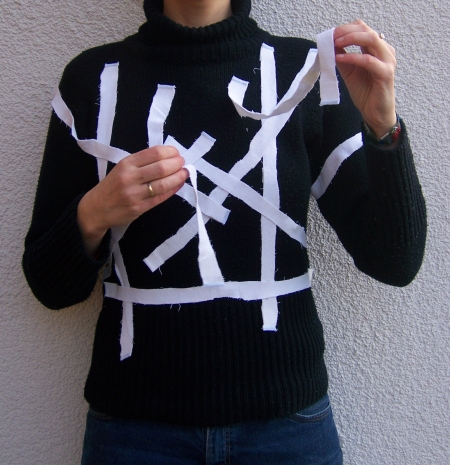
The communicative aspect of fashion had interested us already previously (like in our project d-room). In particular in this old post I was fascinated by the possibility to convey messages via fashion (here in form of the accessory fan). Buttons are also a popular method for conveying messages, but the “interactivity” potential which is given by the fan can’t be resumed by the buttons. The new possibilities of e-textiles can certainly be extended from interactive camouflage to a fully fledged on-body messaging board (like e.g. with a flexible e-paper-fabric). I like electronics (and in particular everything which has to do with light and LEDs) and admittingly I have a soft spot for the works of Hussein Chalayan however given the recent IPCC reports on climate change it is may be better not to look at Hussein Chalayan (at least for the moment) but at simpler environmental friendly solutions.
The below images* display a suggestion of how one can e.g. convey messages via ribbons to which I attached a little piece of velcro (unfortunately plastic) so that they stick to a woolen sweater. Of course one could take ribbons in different colors and different shapes as well (a microeconomy entrepreneur could make almost a business!). You can make up your own messages to the images, there is no fixed code to them. The last gif animation displays how one can wobble with the ribbons like with a fan.
Last not least – this messaging solution will face problems in summer.
*thanks to Chrissii for modelling.
Read the rest of this entry »
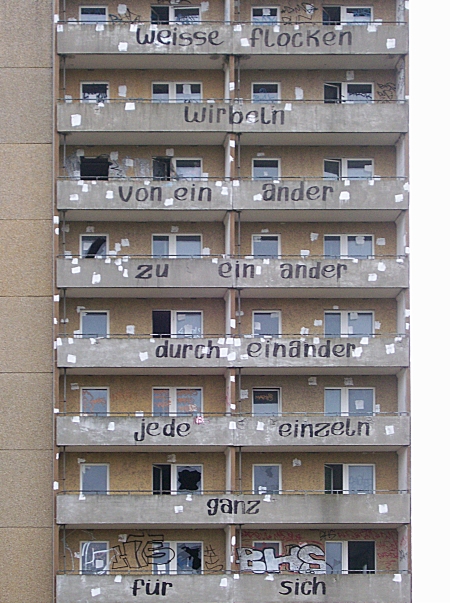
This is a little update to our mahrzipanien applet, which reflects on the changes which are taking place in the architecture of former gdr showcases/partial manifestations of utopies of east german socialism in the eighties. The post contains some images from the district of Berlin-Hellersdorf. In comparision to posh districts like Mitte, Prenzlauer Berg or Friedrichshain living is nowadays still relatively cheap in Hellersdorf. Despite this the housing cooperatives which own a big part of the district have often problems to rent out appartments. One tries to make the district more attractive by tearing down some of the bigger houses (or making them smaller) by renovation and by building new buildings.
This is an update of an older randform post about tesselations and in particular about socalled penrose tilings.
There had been quite some media coverage about the discovery of what looked like quasi-periodic tilings in medieval Islamic architecture (see Peter J. Lu and Paul J. Steinhardt, Decagonal and quasi-crystalline tilings in medieval Islamic architecture, Science 315 (2007), 1106-1110. Also available at http://www.physics.harvard.edu/~plu/publications/).
(John Baez has some more links on quasicrystalls and other symmetries). Among others the authors write in their paper:
We further show how the girih-tile approach opened the path to creating new types of extraordinarily complex patterns, including a nearly perfect Penrose pattern on the Darb-i Imam shrine (Isfahan, Iran 1453 C.E.)
In some of the media coverages this may have left the impression that the mediavel islamic artists managed to create a true Penrose tiling.
Now Prof. Penrose himself had entered the discussion, among others he is cited in the postscript on a post in the homunculus blog with the statement that the tilings have:
…different basic shapes, no matching rules, no evidence that they used anything like a “Penrose pattern” to guide them, the hierarchical structure indicated by their subdivision of large shapes into smaller ones is not strictly followed, and would not, in any case, enable the patterns to map precisely to a “Penrose tiling”.
so if I understood correctly he claims that among others there were “defects” in the construction of the tilings (subdivision is not strictly followed) so that they are not strict enough for a save mathematical classification, like needed e.g. for an inflation rule symmetry (?)
whatsoever – despite this it should be remarked that he adds that:
I do, however, regard this work of Steinhardt and Lu as a most intriguing and significant discovery..
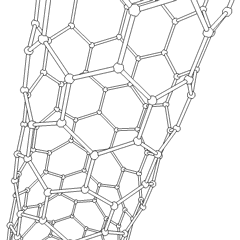
via somewhereville